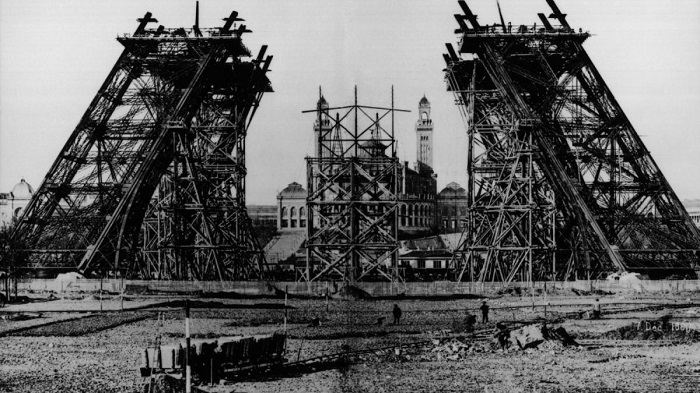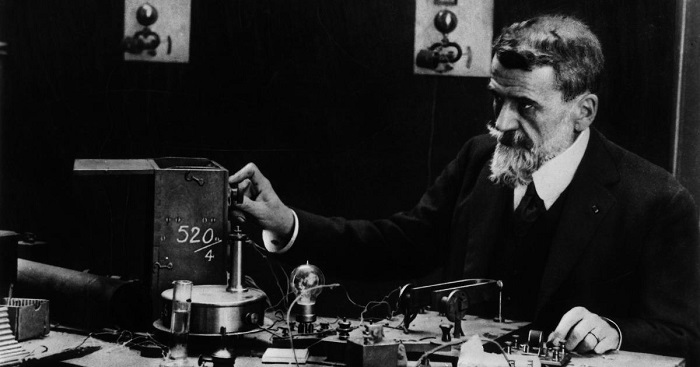ISABEL RUBIO ARROYO | Tungsteno
Alexandre Gustave Eiffel became an international figure after building one of the world’s most emblematic towers: the Eiffel Tower. But this civil engineer, who specialised in metal structures, also produced many other unique creations: from bridges to railway stations to the iron framework of the Statue of Liberty and even wind tunnels. We explore the life and work of this great French civil engineer and businessman, who was tainted by a case of corruption that almost ruined his career.
The maestro who brought metal to life
After graduating from the Ecole Centrale des Arts et Manufactures in Paris in 1855, Eiffel founded and developed a company specialising in metalwork. His legacy is inestimable: he built hundreds of metal works all over the world. "Bridges, and in particular railway bridges, were his favourite field of work, but he also won renown for his metal structural work and industrial installations," explains the Eiffel Tower website.
"Eiffel managed to make his company the fourth, fifth or sixth largest of the major French metal construction companies," says engineer and historian Bertrand Lemoine, who explains that much of his success was due to his knowledge of the science of materials and his ability to choose effective partners. The Eiffel Tower, erected in Paris in 1889, is his most famous creation. But it is just one more example of his work in metal, which also includes two almost twin viaducts (in Oporto, Portugal, and Garabit, France) and the Bordeaux Bridge.

The Eiffel Tower is Gustave Eiffel's most famous creation. Credit: Eiffel Tower official website
The corruption scandal that threatened his career
Eiffel's career was not all smooth sailing. In 1893, the engineer became embroiled in a major corruption scandal surrounding the construction of locks at the Panama Canal. The Panama Canal Company, founded by French diplomat and businessman Ferdinand de Lesseps, was struggling to raise the funds need to complete the project. A huge publicity campaign turned into a fiasco when the press discovered that many parliamentarians had been bribed to obtain a special loan and open up the capital again to shareholders, according to Radio France.
The company failed to raise the funds, suspended payments and abandoned the project. This led all the ruined shareholders to bring charges of fraud and breach of trust against Ferdinand de Lesseps and others involved, including Eiffel. The newspapers Le Petit Parisien and Le Figaro reported that he was accused of "having received certain sums of money to carry out various tasks which he did not carry out". On 9 February 1893, the engineer was sentenced to two years' imprisonment and ordered to pay 20,000 francs, but on appeal he was acquitted and spared prison time.

Eiffel was embroiled in one of the biggest financial scandals of the 19th century. Credit: Eiffel Tower official website
Eiffel's scientific legacy
These events led Eiffel to retire from the business world and focus on research. He spent the last 30 years of his life conducting experiments. Above all, the engineer wanted to prove the usefulness of the Eiffel Tower in order to prevent it from being dismantled after 20 years, as originally planned. The monument thus became a laboratory where he carried out experiments in meteorology and aerodynamics and even had a small wind tunnel built.
But according to Lemoine, "it was the radio that made the tower a key site for scientific experiments." At the end of the 19th century, he says, the remote wireless transmission of signals was invented, which aroused the interest of the military authorities. The Eiffel Tower was an ideal place to experiment with these technologies because of its height, which allowed messages to be transmitted over long distances and over large areas. The monument "gained strategic military importance" and an extension of the land concession was granted for a further 70 years. "From then on, there was no doubt about its destiny," says Lemoine.
In addition to being a great builder, Eiffel conducted numerous scientific experiments. Credit: RFI English
Eiffel died on 27 December 1923 at the age of 91, surrounded by his family. To commemorate the centenary of his death, this year will see a number of tributes to the engineer. Exhibitions and immersive experiences will be organised at the Eiffel Tower. In addition, special music and lighting will be designed for the monument in collaboration with French DJ and producer Michael Canitrot. Other organisations such as the Association of the Descendants of Gustave Eiffel (AGDE) and La Poste will also be organising tributes with a clear objective: to keep the legacy of this magician of metal alive in the minds of many.
· — —
Tungsteno is a journalism laboratory to scan the essence of innovation.
